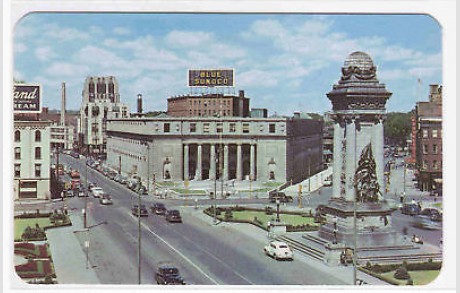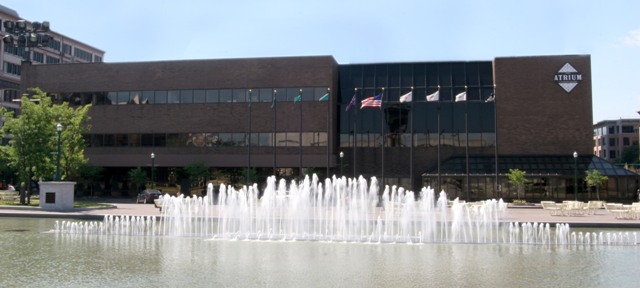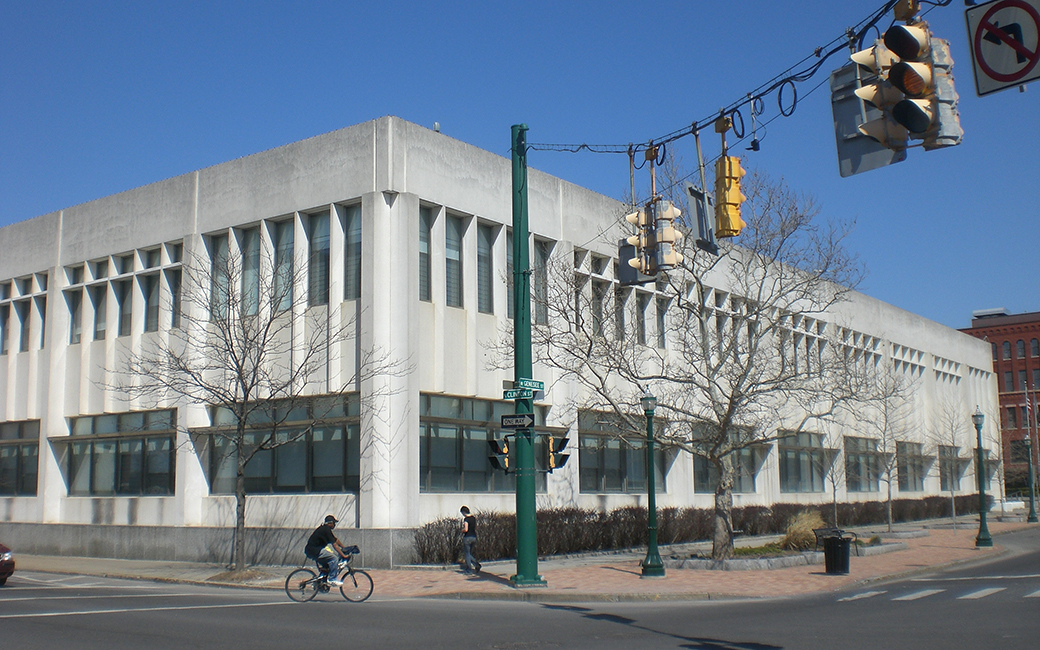The heart of the City of Syracuse has always been Clinton Square. The Erie Canal brought life and industry to this small village and helped build it into a city. Its central point along the canal allowed the area to thrive, resulting in an absolutely beautiful downtown built on the edges of the water. In the winter, when the water froze over, ice skaters flocked downtown creating a festive environment that embraced the harsh weather.
In 1925 the city decided to fill in the canal and create a boulevard, deciding that the future was to be built around the automobile. This may have been one of the most shortsighted decisions in the city's history. The boulevard became a thoroughfare instead of a destination. Over the years the square lost its life, not only due to the boulevard cutting through it but also the bland, inward facing buildings built around it. The Atrium and the old Post Standard offices removed street facing businesses, closing off the sides of the square, robbing it of street activity. Parking lots were built in place of older buildings. Slowly pedestrians vanished, effectively killing the square.
Perhaps recognizing the mistakes of the past, the City of Syracuse decided to close off part of Erie Blvd. in 2001, building a reflecting pool in its place. The reflecting pool and fountain are meant to conjure up images of the Erie Canal and bring the square back to life. Although this change is in the right direction, the square often sits empty even today. The ice skating rink in the winter attracts patrons well enough, but the square only truly comes alive during the festivals planned during the summer months.
This may seem obvious; of course people come when you schedule a big event like Taste of Syracuse or the Irish Fest. But its important to look at what those events bring to the square that attract so many people - they bring food and shopping back to the street. Pop up shops and restaurants during these festivals help pack the streets, creating tight paths with visually interesting changes every few feet. This is what a walkable, welcoming destination requires. You can look even just a block away at Hanover Square to see this same principal at work all year round.
Hanover Square in Syracuse, NY
The much smaller square is what planners will refer to as "human size." The idea is that people feel more comfortable in places that feel protected. Wide open spaces like the current Clinton Square are off-putting. There isn't enough visual interest to keep you occupied and too much space between destinations to make it welcoming. In contrast, Hanover Square benefits from having much of its original architecture, tight streets, and a small park, allowing for congregating in various settings.
Clinton Square has the potential to create those same feelings and is already working to create them. Two major changes are already underway along the edges of the square; the newly finished addition to the Amos building and the ongoing renovation of the old Post Standard. The addition on the Amos not only brings new residents to the square, but also creates retail space facing the square, drawing in pedestrians and helps close in an open space. The Post Standard renovation will not have the same benefit of retail space on the ground floor, at least not at the outset, but with the plan to add a couple floors of residential development not only brings in people but also helps create that "human size" comfort. The added height will allow the space to feel more enclosed, creating a more intimate experience.
These are good first steps, but I believe there's more the city and property owners around the square can do to create a constantly thriving environment. One simple improvement would be to create congregation spots. As people we have a natural inclination to cluster together. You might notice this when you're walking down the street or through the mall and you find yourself funneling through a few different groups of people close together. Often times these clusters appear close to benches and trash cans, but the trick is to create combinations of objects that attract people. You can do that easily in Clinton Square; rearrange benches and trash cans, add planters with small trees and flowers along with evergreen trees to maintain color in winter. Adding one of two small pavilions would also add anchor points for social interactions. These pavilions could be tiny cafes selling coffee and hot chocolate, or sweet treats. These are natural focal points that take up minimal space but provide additional life to the area.

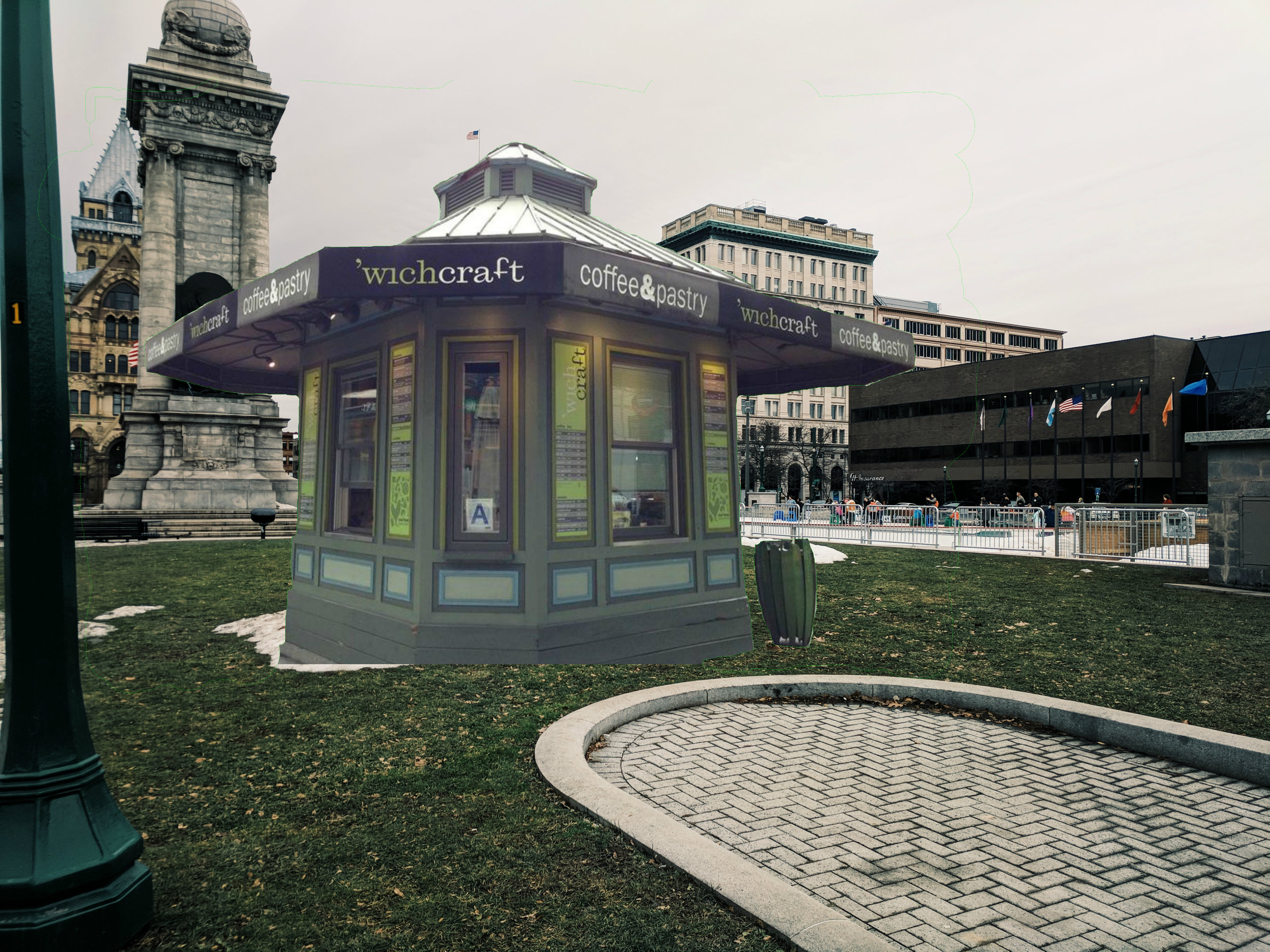
Another easy addition to the square would be artistic bike racks and an extension to the Cuse Cycle network. The bike racks would add architectural interest to the plaza while serving as a congregation point. With Cuse Cycle you give Syracuse's only bike share program a real shot at being a commuting service. With its limited reach along the Onondaga Lake Parkway it acts as little more than a leisure option. If we work with the network to add a rack in Clinton Square, along with racks along the Creek Walk, it will give people a new option when it comes to commuting to downtown. The hope would be to make Clinton Square an alternative transit hub with bike lanes reaching out from it in every direction.
A final step to truly reworking the square would be to completely close off the side street/parking area next to the Atrium. This space deadens the area and adds to the over openness of the square. Instead the city should allow the Atrium to add onto its facade, possibly creating a cafe that can open itself up during nicer weather.

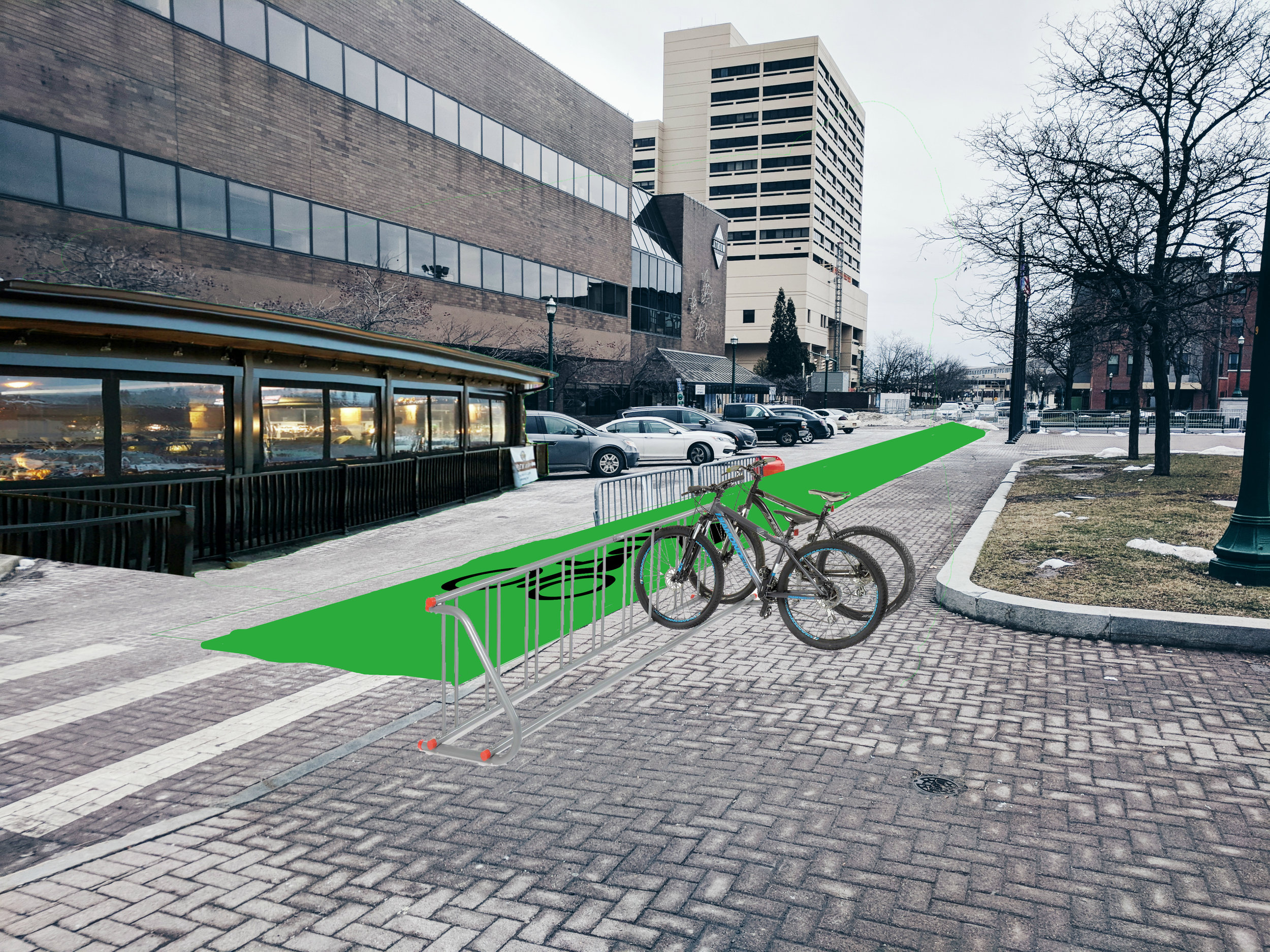
Many of these ideas are easy and inexpensive to act upon but require people to rethink how our open spaces should function. If we work with the neighboring properties we can find ways to break up the dead space while funneling people cluster points. There's no reason this square has to live and die by festivals. It should be able to thrive on its own on your average weekday, while being enhanced during festivals.



